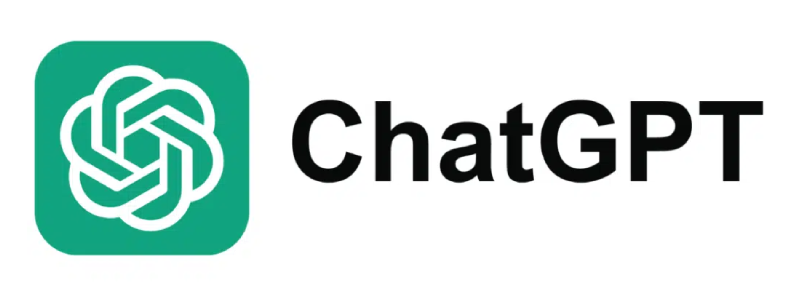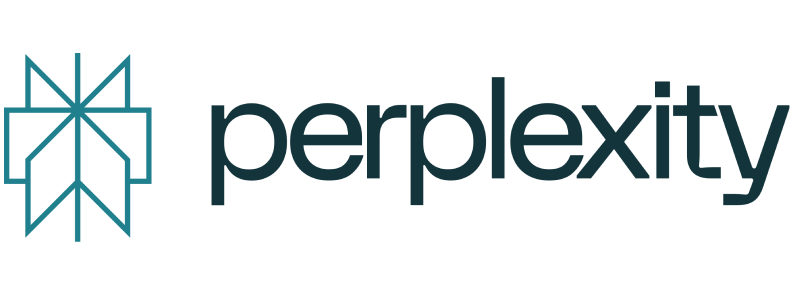Key takeaways
- Document generation automates the creation of contracts, proposals, and agreements using templates, reducing manual effort and errors.
- Automation enhances efficiency, ensuring faster turnaround times, error reduction, and improved user experience.
- Features like dynamic tables, variables, loops, and conditionals enable customized documents and bulk production with personalized data.
Manually creating proposals, contracts, agreements, and sales proposals can be time-consuming and resource-intensive. Gathering information and incorporating it into templates can be quite taxing when your teams could focus on more meaningful tasks.
A document generation tool makes creating and sharing documents easier with templates, automated data insertion, smart content blocks, creating documents that are unique with customer specific information . It simplifies and speeds up the document creation process while conserving monetary and opportunity costs.
The main benefit of document generation is the creation of custom templates, which enables bulk document production without compromising the branding that needs to go into each document. This article tells you all you need to know about document generation and how it can benefit your business.
What is Document Generation?
Document generation is the process of automatically creating documents using software and predefined templates. Instead of manually filling in names, numbers, and contract clauses, the system pulls data from your CRM, spreadsheets, or databases and drops it into the right spots, accurately and instantly.
At its core, a document generation software offers:
- Templates you can build once and reuse
- Dynamic tables that pull rows of data (like financial metrics or product details).
- Variables that fill in customer names, dates, or amounts automatically
- Loops for repeating sections such as invoices or order forms
- Conditionals that adapt content depending on the service plan, pricing, or terms
Automating document creation in bulk can produce multiple documents in a few clicks, eliminating the possibility of manual errors.
Importance of Document Generation
Manually drafting documents is boring, eats up hours and leaves plenty of room for mistakes. A document generation tool flips that around by taking care of repetitive paperwork automatically.
With automation, you can:
- Save valuable time and accelerate deal cycles
- Keep your brand voice consistent across every customer-facing document
- Cut down on costly slip-ups that creep in with manual work
- Stay on the safe side of compliance, whether it’s GDPR, HIPAA, or other regulations
- Deliver a smoother customer journey with quick, polished documents every time
What are the steps to automate a document?
Document generatior simplifies document creation by utilizing predefined templates, customized tools, and real-time data integration from existing databases and business systems. The automation process uses APIs, IPAAS, project management tools, CRM, data capture forms, sales automation tools, cloud storage, and productivity platforms to generate documents faster.
With Docupilot, you can create a custom template to generate documents using inbound and deliver them using outbound integrations. In addition to integrations, you can use the following elements to make bulk document generation more dynamic.
Dynamic Tables
You can simply link your tables or spreadsheets to a dynamic document template. This template automatically pulls data from the linked spreadsheet to fill specific map fields.
For example, for a financial statement, you can use dynamic tables to list various financial metrics across different periods. This will create rows or columns based on the metrics and periods in your data.
For instance, a dynamic template will extract actuarial information from specific rows, such as income, resources procured, months, and units, to populate dynamic map fields for every month's financial statement.
Conditionals
Conditionals are statements that determine whether a specific section of a document should be included based on certain conditions. This feature allows for generating more complex and customized documents without manual intervention.
For instance, in a service agreement, you can use a conditional statement to specify a chosen service plan, pricing, services offered and agreement clauses. This way, the final document will reflect everything agreed upon without needing manual intervention every time.
Variables
Variables are used as placeholders in document templates to avoid writing specific information repeatedly.
For instance, variables can be used in a contract template instead of names, dates, or amounts. When generating a document, these placeholders are filled with actual data from linked data sources. This ensures personalized and accurate document generation for each client.
Loops
Loops are great for repeating sections of a document based on provided data. This is especially handy for listing multiple items dynamically, like invoices or reports.
For example, you can set up a loop in your billing invoice template to automatically list all specified goods and services from your data source without manual intervention. It's a quick and efficient way to generate a comprehensive billing invoice with all the necessary details.
Types of Documents Generated
Here are the conventional types of documents generated.
- Legal contracts
- Invoicing records
- Business proposals
- Estate paperwork
- Employment offers
- Marketing materials
- Financial summaries
- Client onboarding
- Order forms
- Sales collateral
- Business or ROI cases
- Agreements and contracts, etc
The use cases and templates for automated document creation are not limited to these types only. Users can easily create customized versions to align document generation with business needs.
For example, a law firm can easily generate retainer contracts for multiple clients using the Docupilot extension in Airtable or by Integrating Clio with Docupilot via any integration platforms like Zapier or Make. This allows tracking client onboarding status and automating data inputs to fill the map fields.
Advantages of Document Generation
Document generation provides organizations with tangible, high-impact benefits that directly improve productivity, accuracy, and customer engagement. Key advantages include:
1. Speed and efficiency
Predefined templates combined with data integrations enable documents to be created in seconds. Dynamic tables and loops automatically populate invoices, financial statements, or product catalogs, freeing teams to focus on strategic work instead of repetitive formatting.
2. Accuracy and error reduction
Variables and conditionals ensure that information is pulled directly from trusted sources such as CRMs, billing systems, or spreadsheets. This eliminates manual errors, reduces the risk of version mismatches, and minimizes costly rework or disputes.
3. Enhanced customer experience
Features such as smart forms, embedded editors, and guided input fields simplify the review and completion process for customers. With integrated e-signature workflows, agreements can be finalized seamlessly, thus eliminating the need for printing, scanning, or using multiple applications.
4. Consistency and version control
Centralized templates guarantee brand, legal, and pricing consistency across documents and departments. Version control mechanisms ensure only the latest terms and standards are applied, protecting both brand integrity and compliance.
5. Integration and workflow automation
Advanced document generation platforms integrate with CRMs, ERPs, and productivity tools like Airtable to streamline processes. Completed documents can be automatically delivered to storage systems, routed for e-signature, or connected to downstream applications, creating a fully automated and auditable workflow.
6. Security and compliance
Leading platforms embed enterprise-grade security features, including encryption, role-based access, and audit trails. With compliance certifications such as SOC 2, ISO 27001, GDPR, and HIPAA, businesses can confidently manage sensitive documents, from contracts to healthcare forms and financial reports.
How to Choose The Right Document Generation Software?
Your choice of document generation software can be a game changer if it has the following features.
Need evaluation
Every business has specific requirements for document generation and automation. So, the first step is to identify your needs. Then, you can define the right features related to automation, integration, document creation, storage, and sharing. With the right features, you can create and route documents to the target recipients on time.
Extensive research using a free trial
Most services offer a free trial period to help you determine if their automated document creation solution is right for your business. Comparing multiple products during this time can help you identify the most suitable option for your needs.
Understanding ROI
Creating documents manually can be time-consuming and resource-intensive. However, a document generator with templates and data integration can save you time and money. With a credit-based usage plan, you can generate documents for just a few cents per document , increasing the ROI on document creation.
Features to look for in a document generation platform
When evaluating document generation platforms, it is essential to look beyond cost and focus on the capabilities that will deliver measurable value to your organization. Key features to prioritize include:
- Seamless integrations: The platform should connect easily with CRMs, ERPs, Airtable, Google Sheets, and other databases to ensure that data is accurate and always up to date
- Flexible template builder: A user-friendly template editor that supports advanced formatting, images, tables, calculations, and branding elements ensures professional, on-brand documents at scale
- Dynamic document elements: Features such as variables, loops, conditionals, and dynamic tables allow for highly personalized and data-driven document creation without manual intervention
- Embedded editor and e-signature capabilities: Built-in editing tools and native e-signature workflows streamline collaboration and eliminate the need for multiple platforms
- Robust security and compliance: Enterprise-grade security measures, including encryption, role-based access controls, and audit trails, should be backed by certifications such as SOC 2, ISO 27001, GDPR, and HIPAA
- Data validation and smart forms: Input fields with validation rules reduce errors and improve the accuracy of captured information
- Automated delivery and outbound integrations: Completed documents should be automatically routed to cloud storage, shared with stakeholders, or connected to downstream systems such as accounting or contract management platforms
- Scalable and transparent pricing: Predictable pricing models, such as credit-based usage, help organizations plan costs effectively while supporting growth and high-volume use cases
- Support and onboarding: Strong documentation, responsive customer support, and migration assistance accelerate adoption and reduce time to value
In a Nutshell: Select a Suitable Document Generation Tool
Selecting the right document generation tool can transform how your organization manages contracts, proposals, reports, and customer-facing materials. The ideal platform should offer seamless integrations, a flexible template builder, dynamic document elements, and enterprise-grade security. Additional capabilities, such as an embedded editor and built-in e-signature functionality, further streamline collaboration and remove friction from the approval process.
Docupilot, for example, combines these essential features with credit-based pricing, powerful integrations, and robust compliance measures. It enables organizations to create, customize, and deliver professional documents quickly and securely, while supporting the entire document lifecycle from creation to signature.
Take the next step towards securing your document generation journey: Book a demo or start your free trial today.


.svg)
















